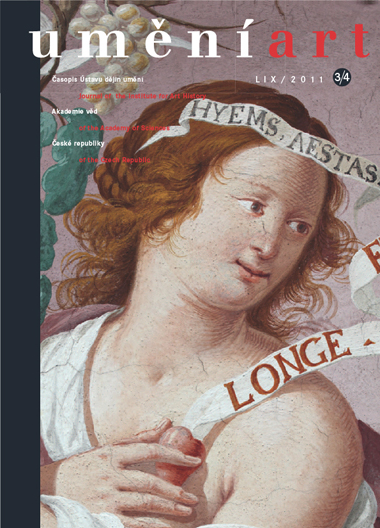Martin Mádl
'MORS ET VITA, HYEMS ET AESTAS, LONGE ET PROPE': Carpoforo Tencalla's Paintings in Náměšť nad Oslavou
The paintings by Carpoforo Tencalla (1623-1685) in the sala terrena of the Moravian château in Náměšť nad Oslavou (Namiest) rank among the most valuable fresco cycles in 17th-century Central Europe. The central feature of the series of paintings consists of scenes from the myth of the love between Cupid and Psyche. The individual paintings depict the separation of the two lovers and Psyche's journey to the Underworld. A happy denouement to the story, in the form of Psyche being raised to the rank of an Olympian and her wedding to Cupid, which in the decoration of aristocratic residences usually reflects the current matrimonial policy of the person commissioning the work, is however missing in Náměšť. The pessimistic ending to the cycle is further emphasised by allegories relating to human tribulations and suffering. The creation of the paintings had hitherto been dated around the year 1675, because Tencalla had been working shortly before then in Olomouc. At that time Náměšť belonged to Johann Philipp von Verdenberg (†1733), who had only just reached adulthood and had his whole life (and marriage) still to come. We cannot find any reasons here why he should have included the motifs described above in the decoration of his residence. Such reasons can, however, be found with Count Ferdinand von Verdenberg (1625-1666). Following the deaths of his adult sisters and his father, his two young wives, Maria Susanna von Puchheim (1630-1650) and Maria Maximiliana von Waldstein (1634-1654), also died, in both cases when they had only been married to him for a short time. The funeral orations over their coffins in the church of St. Michael in Vienna were delivered by the Barnabite preacher, Fr. Florian Schilling. Schilling's sermons contain several motifs that appear in the paintings in Náměšť. It is our view that Tencalla's paintings in Náměšť reflect the deaths of Ferdinand's two wives, and that they were created between 1654 and 1659, when Ferdinand married for the third time. Together with the paintings in Červený Kameň (1655), which are similar in style, they are thus possibly the earliest works painted by Tencalla north of the Alps.
Full-text in the Digital Library of the Czech Academy of Sciences:
https://kramerius.lib.cas.cz/uuid/uuid:e29f08bb-4082-4d1b-a91b-5489eea0d48a
< back

